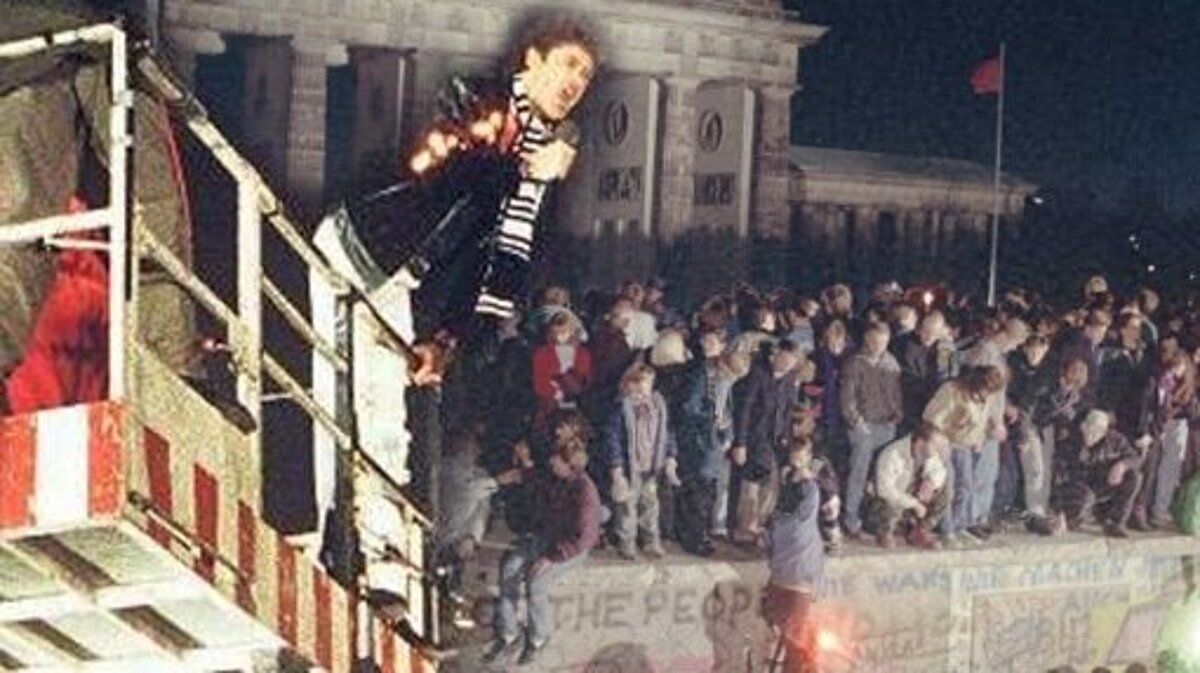Did David Hasselhoff sing the Berlin Wall down?

The fact check on German Unity Day
For more than 28 years, the Berlin Wall separated the present-day FRG from the eastern part of the country, the GDR. Various political and generally known reasons, finally led to the opening of the curtain from 9 to 10 November 1989. The wall was guarded since 9 November 1989 for the time being still further and border crossings mostly prevented. Just in time for Christmas, on December 24, 1989, German citizens were allowed to enter the GDR without a visa for the first time. However, the borders had not completely fallen by then.
October 3, 1990 marks the turning point in history. The "Day of Unity" commemorates German reunification and thus the official accession of the GDR to the Federal Republic of Germany.
"Lookin' for freedom" - The reunion song and David Hasselhoff
Even today there are many rumors and even finds place in some conspiracy theories
Brandenburg Gate - New Year's Eve 1989/90 – The wall had some holes. From a lifting platform Hasselhoff belts out the song "Lookin' for freedom". Below him stand citizens. In a frenzy of joy, they lie in each other's arms, dance, sing and the already dilapidated wall continues to fall.
Rumors persist that Hasselhoff would have "sung down" the wall. In conspiracy circles it is even said that he would have known in advance.
But what is there to the rumors?
The text analysis
If you take a closer look at the lyrics, you will notice that the lyrics were not actually tailored for this day. The song tells of a boy who seeks freedom and thus leaves his home. However, this boy does not find freedom. The song ends with "Still it can't be found".
It is a fact that the song was not intended exclusively for this day. Nevertheless, of course, the rush of joy and the lyrics "Freedom (=Freiheit)" which somehow made it fit.
However, he has actually sung the wall... at least symbolically.
But would it really have been possible, in the literal sense, to bring down the wall with pure vocal power and amplifiers?
Our engineers have investigated this question:
The technical aspect
First, the piece of music was searched for dominant frequencies. With the help of a "Fourier transformation" the following frequencies appear:
67 Hz (Corresponds approximately to a C)
132 Hz (corresponds approximately to a c)
150 Hz (Corresponds approximately to a d)
199 Hz (Corresponds to about one g)
266 Hz (Corresponds approximately to a c')
An applied modal analysis then examined a wall segment in terms of natural frequency. The first natural frequency is about 9 Hz, which is considerably lower than the frequency of the music. Direct excitation and resonance of the wall is therefore not to be expected.
What about higher frequencies?
Higher frequencies automatically mean more energy for the excitation. Thus, as the frequency increases, it becomes less and less likely that the wall piece will resonate. "Looking for Freedom" finally excites the following natural frequencies of the wall:
- Mode no. 5 at 62.2 Hz
- Mode no. 9 at 128 Hz
- Mode no. 12 at 205 Hz
- Mode Nr 16 at 266 Hz
It should be noted that excitation can also occur in the tolerance range of +-10%.
A vibration analysis (harmonic response) was carried out with these modes. A pressure of approx. 6 Pa was assumed (corresponds to approx. 110 dB).
What tensions arise?
[smartslider3 slider=7]
The calculation results in stress peaks of 1E-3 N/mm². This is more than a factor of 1,000 too low.
Conclusion: Who would have thought it? It is not possible to bring down the wall with a pure voice. Tests by n-tv also show that even glasses cannot be shattered. These are mostly tricks or a technical amplification of the voice.
What is the application in everyday life?
This playful representation of calculation methods has many applications in everyday life. We regularly test components for vibration behavior and strength under sinusoidal excitation or noise.
Have we aroused your interest?
If you have similar tasks, please do not hesitate to contact us.
We would also be happy to arrange a non-binding consultation appointment or a telephone consultation.
Phone: +49 (0)7321 9343-0
E-Mail: info@merkle-partner.de
Of course, you are also welcome to browse our website:
www.merkle-partner.de


